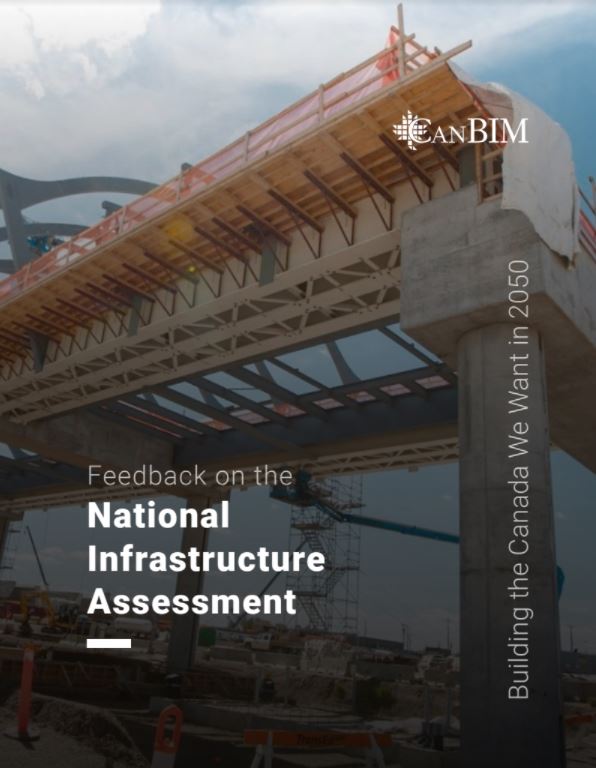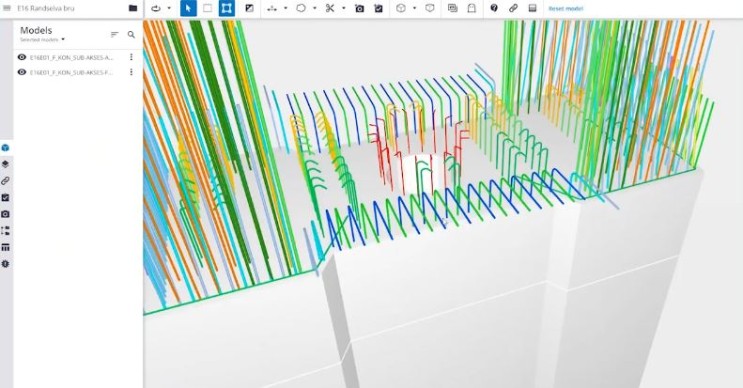It was in March 2021 that the Government of Canada launched its Engagement Paper on Canada’s first National Infrastructure Assessment: “Building the Canada We Want in 2050" and asked for industry feedback. In this blog entry, we’re going to take a look at the key priorities of the Canadian National Infrastructure Assessment itself and CanBIM’s solutions to different challenges.
Read this blog post to get an overview of the main proposals of the National Infrastructure Assessment and to learn more details on how BIM should be reflected in those priorities.
Canada’s investment in infrastructure
In recent years, the Government of Canada has invested significantly in infrastructure to keep the “economy moving and communities thriving”. To share with you some numbers, the Investing in Canada Plan launched in 2016 has committed to invest in 12 years more than $180 billion in federal funding to infrastructure programs across public transit, green infrastructure, social infrastructure, trade and transport, and rural and northern communities.
What is the goal of such a big investment in the infrastructure of Canada?
With the approved projects and billions invested, the Government of Canada has followed the line of achieving three core objectives “promoting economic growth, job creation, and competitiveness; tackling climate change and increasing resilience, and improving social inclusion and quality of life for all Canadians.”
So we can see that, in addition to the prosperity of communities, the investment in infrastructure will also play a big role in Canada's ability to exceed the 2030 climate targets and
achieve net-zero emissions by 2050.
For our part, we can confirm that a solid understanding of an infrastructure asset’s life cycle will help the stakeholders to make the best-informed sustainable decisions for environmental impact. That and formal asset-management techniques are among the key objectives of
Master’s in Global BIM Management for Infrastructure Projects, a program that covers the most innovative BIM tools and software.
What is the goal of Canada’s National Infrastructure Assessment?
With the launch of the National Infrastructure Assessment and its call for feedback,
Canada’s Minister of Infrastructure and Communities, the Honourable Catherine McKenna, seeks input from the public, Indigenous Peoples, provinces, territories, municipalities, and other stakeholders to consider a variety of points of views. The three main priorities put up for discussion are:
- Assessing Canada’s infrastructure needs and establishing a long-term vision;
- Improving coordination among infrastructure owners and funders; and
- Determining the best ways to fund and finance infrastructure.

Feedback on Canada’s National Infrastructure Assessment
Now that we know the background of this Engagement Paper, it’s time to delve into the feedback given by CanBIM, our academic partner and Canada’s largest building and infrastructure community.
Their Feedback Paper follows the same three priorities stated by the Minister of Infrastructure and Communities and in what follows, we’re going to go over their main proposals for each area.
1. Assess Canada’s infrastructure needs and establish a long-term vision
When it comes to long-term vision, the CanBIM feedback suggests altogether five main areas of work with their respective solutions:
a.
Creating an infrastructure digitization strategy is one of the first steps that Infrastructure Canada could take to establish a long-term vision. This roadmap should include standards at a federal level on how to report and share data and be carried out in partnership with the private and public sectors.
b. Another strategically important aspect in the long-term vision is to contemplate how to reduce carbon emissions. The
net-zero roadmap could establish a process that would mandate all public infrastructure projects to include a lifecycle analysis including financial impacts over a 50+ year planning horizon. That’s also where BIM would come in to facilitate the embodied carbon analysis.
c. Next important step that CanBIM proposes for Infrastructure Canada is to influence and incentivize innovation
by fostering a collaborative environment between the private sector and academic institutions. In practice, this would mean investing in research and development and creating a plan to share the findings with the whole industry.
d. Tackling the labor shortage, particularly in the construction industry among the first shortcomings to be tackled. In the view of the planned big investment in infrastructure, the construction industry in its current form simply cannot deliver it with its existing and shrinking workforce, as the CanBIM feedback paper points out. What can be done? There are two main activities:
bringing young people into the profession and creating a national plan to train and encourage immigrants with these skill sets to come to Canada. The work in this point is also closely related to the much-needed collaboration between the private sector and academia.
e. As the construction sector is becoming more dependent on technologies, the moment has come for Canada to also up its design and construction technologies game. “To champion our own Industry 4.0”, the CanBIM paper proposes to the government two main strategies. On the one hand, to incentivize the use of technologies developed in Canada during the procurement process. And on the other hand, to create tax rebate programs for small and
medium-sized construction companies that wish to incorporate new technologies in their projects.
2. Improve coordination among infrastructure owners and funders
The second priority stated in Canada’s first National Infrastructure Assessment is related to improving coordination, collaboration, and alignment among public and private sector infrastructure owners and funders. Here, CanBIM presented three proposals that would help to foster coordination among infrastructure owners and investors.
a. As all who have worked with BIM well know, the increase of operational efficiency and improved collaboration are among the many benefits of the implementation of this methodology. That’s why a
National BIM Mandate would truly assist in the creation of a forward-thinking sector. Following the example of the UK BIM Mandate, Canada’s neighbor, the US has already started developing a national roadmap aligned with ISO 19650. In order to be empowered to build Canada of the future, the construction industry needs a national roadmap developed in collaboration between the government and the private sector.
b. Another important action that the Government of Canada can take to promote alignment across owner operations is leading an
Integrated Project Delivery (IPD) procurement approach. This approach brings all the stakeholders together from the beginning of the project and encourages the development of a digital twin. The IPD approach helps the parties involved to consider all phases of the built environment’s lifecycle and will definitely play an important role in achieving greater stakeholder alignment. That’s also why the students of the
Master’s in Global BIM Management work in groups on an Integrated Project Delivery (IPD) simulation as their course project and final thesis.
c. Often the smaller municipalities or more remote or northern communities, or Indigenous communities lack the resources and technical knowledge to own, operate and maintain the infrastructure with the same technological tools that large urban centers. As utilization is the longest stage of asset life cycle management, it’s important to work on closing that knowledge gap on a state level. For that, the Government of Canada should partner with the private sector and not-for-profit organizations to
create tools and training programs that would help the owners maintain and operate large portfolios of infrastructure with the help of new technologies.

Project of Wiktor Rybus, Alumni of Master’s in Global BIM Management for Infrastructure Projects.
3. Determine the best ways to fund and finance infrastructure
The third key priority contemplated in the National Infrastructure Assessment is that of understanding infrastructure's current state and the future needs of the population and how to bridge that gap. This point covers the need for long-term infrastructure planning coupled with innovative ways of financing the infrastructure:
a. Having a 50-year planning horizon and putting the long-term vision at the center of everything is crucial in determining the financing. That vision should be built on a procurement method that weighs the lifecycle cost and environmental impact. To move on from the ‘lowest price wins' procurement method, the CanBIM feedback paper suggests the Government of Canada
mandating all public infrastructure project proposals to complete a benefit-cost analysis from an economic, environmental, and societal perspective.
b. To write the next chapters of “the Canada We Want in 2050”, it’s time to
leverage public-private partnerships and involve more private investment. CanBIM recommends the Government of Canada developing a strategy that enables new models of financing to correct the backlog in infrastructure needs.
These have been the 10 solutions proposed by CanBIM following the call for feedback to Canada’s first National Infrastructure Assessment. As an organization that represents 1100 Architecture, Engineering, Construction, and Owner Operators in the construction industry across Canada, their feedback assembles the concerns and ideas of professionals who work on the frontlines daily. CanBIM has proposed very practical guidelines for the Government of Canada to build the future of the country and its infrastructure and we can only hope that the roadmaps, strategies, and, above all, the National BIM Mandate are soon in the works.




 Project of Wiktor Rybus, Alumni of Master’s in Global BIM Management for Infrastructure Projects.
Project of Wiktor Rybus, Alumni of Master’s in Global BIM Management for Infrastructure Projects.

